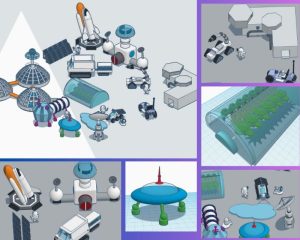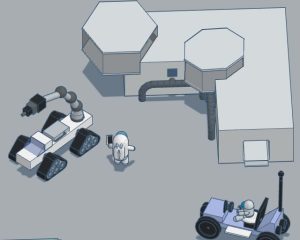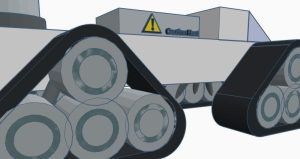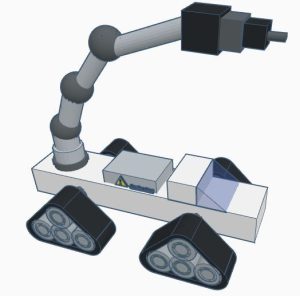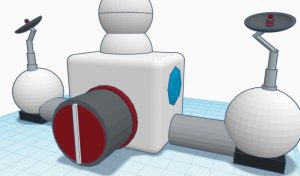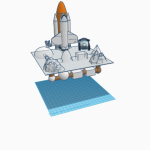Lunar colony design by The 5 Greek Lunar Explorers
3. Kifissian yläaste Ateena-Attiki Kreikka 12 vuotta vanha 5 / 3 Englanti Kuu
Ulkoinen linkki Tinkercad 3D-suunnitteluun
Hankkeen kuvaus
We are 5 students (3 girls and 2 boys, aged 12 years old) from the 3rd Junior High school of Kifissia, Athens, Greece. By participating in the eTwinning program “The Amplified Blue Planet”, (https://school-education.ec.europa.eu/en/networking/projects/155892 ), we learned a lot about space, the life of the astronauts on ISS, the harsh conditions on the moon (such as extreme temperature fluctuations, lack of atmosphere, weak gravity, small meteoroids’ impacts, long days and long nights and exposure to cosmic radiation) and we decided to design a Moon habitat, that cover most of astronauts’ needs for long stay, as Moon is “the first frontier” for long-term space exploration and settlement.
Purifying the lunar ice and turn it into water for human use (drinking, showering, growing plants) is crucial for life support systems and fuel production. Areas near poles, experience more consistent sunlight, providing a more stable environment for solar power generation. Hydrogen and oxygen could also be extracted from lunar soil.
Astronauts should wear spacesuits, which provide insulation against the cold, shield them from harmful radiation and offer them oxygen to breathe in order to carry out activities on the lunar surface.
Shelters, will provide a safe environment for them, divided into interconnected modules, for sleep, rest, work and conducting experiments. It should also include spaces for exercise and mental well-being to support their physical and mental health. The modules should be equipped with double doors, to prevent the loss of air and to allow astronauts to enter and exit the premises. These modules could be transported to the moon via a rocket and assembled there. The modules should be lightweight made from materials like aluminum and durable enough to provide safety and thermal insulation.
They could also be foldable origami structures (https://www.youtube.com/watch?v=tpc9fF8idAU ). The shelters must be airtight and capable of supporting life systems that purify air and recycle water and waste, like those used on the International Space Station (ISS).
Taking all this infrastructure from Earth would be very expensive, so the alternative is using 3D-tulostus techniques that use technologies such as lasers, microwaves or focused sunlight to melt the materials available on the moon, such as lunar soil.3D printing machines can be used to build structures directly from the lunar soil. Also, a crawler excavator and a digging robot machine, with IR obstacle avoidance sensor or motion detection, are needed for excavating printing material.
Astronauts need a Avaruusalus and a Rocket to get back to Earth.
Satellite antennas, to maintaining communication with Earth.
Greenhouses for sustainable food production, growing seeds and developing technologies for food cultivation, such as hydroponic or aeroponic systems that can operate in reduced gravity.
Aurinkopaneelit for power generation, which could be made using silicon from the lunar soil or even better by using thin-film solar panels, that can turn any surface into a power source (https://energy.mit.edu/news/paper-thin-solar-cell-can-turn-any-surface-into-a-power-source/ ). However, as night on the moon lasts for about two weeks, it is necessary to have energy storage devices (like big capacity lithium-ion batteries or hydrogen fuel cells, or blocks of lunar soil to store heat).
Rovers (crawler vehicle) for moving on the moon, driving and maneuvering through obstacles (mountains, craters, etc.), fully equipped with oxygen and water supplies, solar panels, headlights and small antennas for intercommunication.
Overall, a successful lunar colony design must prioritize safety, sustainability, and comfort for the astronauts, in the challenging lunar environment.
Hankkeen linkki
http://3gym-kifis.att.sch.gr/?p=6349
#3D-suunnittelu
Muut hankkeet



